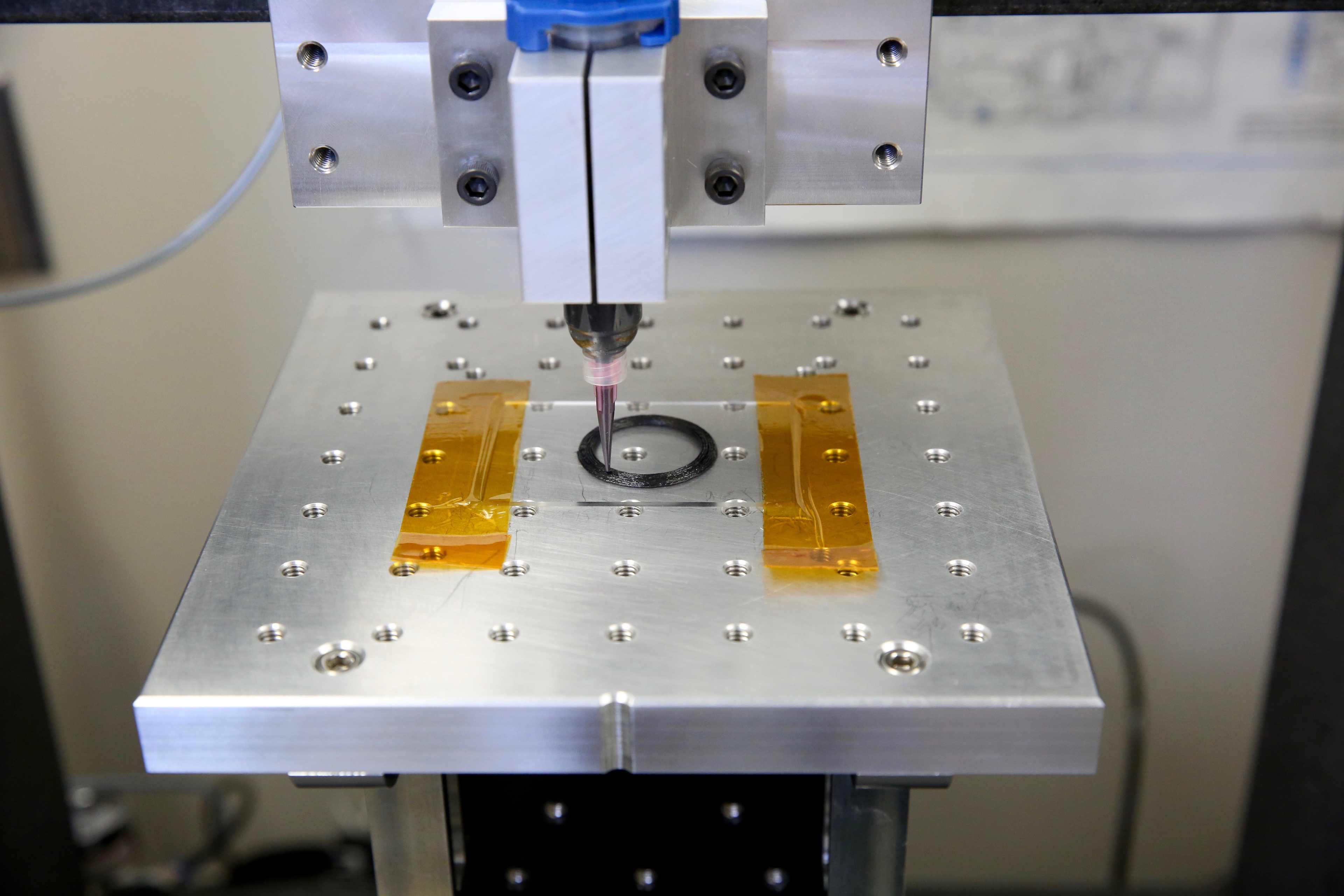Lawrence Livermore National Laboratory (LLNL) in the US says that its researchers have become the first to 3D print aerospace-grade carbon fiber composites.
The research, published by the journal Scientific Reports, represents a ‘significant advance’ in the development of micro-extrusion 3D printing techniques for carbon fiber, the authors reported.
‘[Carbon fiber’s] been waiting in the wings for years because it's so difficult to make in complex shapes,’ said Jim Lewicki, principal investigator and the paper's lead author. ‘But with 3D printing, you could potentially make anything out of carbon fiber.’
LLNL researchers reported printing several complex 3D structures through a modified Direct Ink Writing (DIW) 3D printing process. Lewicki and his team also developed and patented a new chemistry that could cure the material more quickly.
Computational modeling simulated thousands of carbon fibers as they emerged from the ink nozzle to find out how to best align them during the process. ‘We developed a numerical code to simulate a non-Newtonian liquid polymer resin with a dispersion of carbon fibers,’ said fluid analyst Yuliya Kanarska. ‘With this code, we can simulate evolution of the fiber orientations in 3D under different printing conditions.

‘We were able to find the optimal fiber length and optimal performance, but it's still a work in progress. Ongoing efforts are related to achieving even better alignment of the fibers by applying magnetic forces to stabilize them.’
Printing process
The resultant material, the researchers said, could be used to make high-performance airplane wings, satellite components that are insulated on one side or wearables that can draw heat from the body but don't allow it in.
‘A big breakthrough for this technology is the development of custom carbon fiber-filled inks with thermoset matrix materials,’ said materials and advanced manufacturing researcher Eric Duoss. ‘For example, epoxy and cyanate ester are carefully designed for our printing process, yet also provide enhanced mechanical and thermal performance compared to thermoplastic counterparts that are found in some commercially available carbon fiber 3D printing technologies, such as nylon and ABS. This advance will enable a broad range of applications in aerospace, transportation and defense.’
The direct ink writing process also makes it possible to print parts with all the carbon fibers going the same direction within the microstructures. Through this process, the researchers said they're able to use two-thirds less carbon fiber and get the same material properties from the finished part.
This story uses material from Lawrence Livermore National Laboratory, with editorial changes made by Materials Today. The views expressed in this article do not necessarily represent those of Elsevier.





